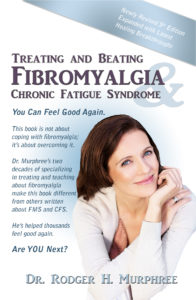These Foods Could Be Making Your Fibromyalgia Pain Worse!
Updated June 2019
Eliminating Allergic Foods Or Foods We Are Intolerant To Often Reduces Symptoms Associated With Fibromyalgia.
 For the last 20+ years I’ve specialized in treating fibromyalgia. During this time I’ve used several different food allergy elimination diets. These diets are designed to help patients uncover any hidden food allergies, or intolerance (eating certain foods makes us feel bad on some level). Everyone has foods (usually ones we eat day in and day out) they are either allergic or intolerant too, finding and then eliminating these foods often allows patients to experience less pain, fatigue, fibro fog, low moods, congestion, and GI symptoms.
For the last 20+ years I’ve specialized in treating fibromyalgia. During this time I’ve used several different food allergy elimination diets. These diets are designed to help patients uncover any hidden food allergies, or intolerance (eating certain foods makes us feel bad on some level). Everyone has foods (usually ones we eat day in and day out) they are either allergic or intolerant too, finding and then eliminating these foods often allows patients to experience less pain, fatigue, fibro fog, low moods, congestion, and GI symptoms.
While not everyone will experience a positive change, at least a drastic change in their symptoms, the elimination diet used in my practice and taken from my new 5th edition book Treating and Beating Fibromyalgia and Chronic Fatigue Syndrome, is definitely worth a trial.
Join Us For a FREE Fibromyalgia Facebook LIVE on Wednesday Nights! 6pm CDT on the New Your Fibro Doctor Group
If you’re not already a member of that group, JOIN NOW, by answering 3 simple questions, and we will add you! See you next Wednesday!
*****
The Elimination Diet
Phase One: Elimination
For at least one month, follow these guidelines:
- Avoid all known and suspected food allergens.
- Also avoid all gluten-containing foods: wheat, barley, oats, millet, spelt, sourdough, and rye. This includes breads, tortillas, muffins, cereals, pastries, cakes, pizza, crackers, pasta, pretzels, and other flour-based products. Look for gluten-free alternatives.
- Avoid all dairy products, including milk, ice cream, cream, yogurt, and cheese. Butter and eggs are allowed.
- Don’t drink any sodas (Coke, Diet Coke, Pepsi, Sprite, etc.).
- Reduce caffeine consumption, including tea (green and herbal tea is allowed), coffee, chocolate, and cocoa. The less caffeine intake, the better. To help prevent withdrawal symptoms (headaches, mood disturbances, and fatigue) slowly wean off. Start by eliminating one quarter of your daily consumption.
- Consider each cup of caffeinated coffee, soda, diet soda, tea—and each chocolate bar—as one caffeine serving. If you consume four cups of coffee in the morning, three glasses of tea at lunch, and a diet Coke before dinner, you consume a total of eight servings of caffeine daily. You should begin by reducing your caffeine servings by one quarter (which is two servings). So drink six servings tomorrow instead. After seven days, reduce your caffeine servings by another quarter. Slowly discontinue caffeine over a manageable period of time. Not every patient must go off all caffeine forever; you will help yourself even if you just reduce your intake to no more than one or two servings a day.

Phase Two: Reintroduction
After one month on the elimination diet, start to reintroduce one eliminated food group at a time. For example, begin by eating a few servings from the gluten group: pasta, crackers, or bread. Then, for three days, eat no gluten-containing foods or any other eliminated food. Keep a journal handy to note any symptoms that occur.
After three days, reintroduce dairy. Have a few glasses of milk or three slices of cheese. Be sure to eat enough servings to let your body experience any negative reactions. If after three days of having challenged a food group, there’s no negative reaction (headaches, stomach pain, bloating, runny nose, congestion, muscle/joint pain, low moods, fatigue, etc.), then start to slowly add these items back into your regular diet. If you do experience a negative reaction to any food group within three days of challenging it, discontinue that group for another month and then repeat the three-day process.
These patients and hundreds of others who’ve worked personally with me have in fact beaten their fibromyalgia. You can read or listen to their stories by clicking the link below:
|
|









Leave a Reply
Want to join the discussion?Feel free to contribute!